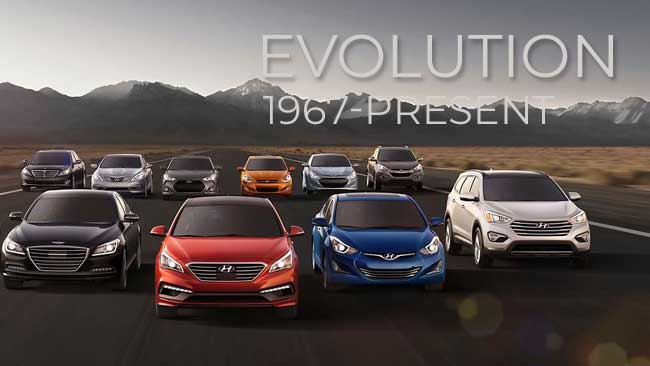Origins and Early Influences
Hyundai’s journey in car design traces back to its inception in 1967 in South Korea. Initially producing Ford Cortina models under license, Hyundai quickly ventured into developing its own designs. In the early years, Hyundai’s designs were heavily influenced by Japanese and American automotive aesthetics of the time, aiming for functionality and reliability over bold innovation.
Emergence of Hyundai’s Design Philosophy
Shift Towards Distinctive Identity
In the 1990s, Hyundai began to carve out a distinctive design identity. The company hired Peter Schreyer, a former Audi designer, in 2006, marking a significant turning point. Schreyer’s appointment signaled Hyundai’s intent to elevate its design language to compete on a global stage. His philosophy emphasized clean lines, fluidic sculpture, and a focus on creating emotional appeal through design.
Introduction of Fluidic Sculpture
One of Hyundai’s pivotal design approaches was the introduction of “Fluidic Sculpture.” This design language, first showcased with the Hyundai Sonata in 2010, emphasized flowing lines, dynamic curves, and a sense of motion even when stationary. The Sonata’s success with Fluidic Sculpture marked a shift in consumer perception of Hyundai from practical to stylish and innovative.
Case Study: Hyundai Sonata
The Hyundai Sonata serves as a prime example of Hyundai’s design evolution. Initially a conservative mid-size sedan, the Sonata’s transformation through Fluidic Sculpture made it a standout in its segment. The design not only enhanced aerodynamics but also conveyed a sense of modernity and sophistication, appealing to a broader demographic.
Modern Innovations and Technological Integration
Incorporation of Advanced Materials
Hyundai’s commitment to innovation extends beyond aesthetics to include material sciences. The use of advanced materials such as high-strength steel and lightweight alloys has allowed Hyundai to enhance vehicle performance, safety, and fuel efficiency without compromising on design integrity. This approach is exemplified in models like the Hyundai Kona and Tucson, which blend rugged SUV aesthetics with urban sophistication.
Integration of Sustainable Design Practices
In recent years, Hyundai has embraced sustainable design practices. This includes the development of eco-friendly materials, efficient powertrains, and electric vehicle (EV) platforms. The Hyundai Ioniq, for instance, showcases Hyundai’s dedication to eco-conscious design, featuring aerodynamic contours and a minimalist interior crafted from recycled materials.
Also Read : The Influences Shaping Hyundai Car Design
The Impact on Consumer Perception and Market Positioning
Shifting Consumer Perception
Hyundai’s evolution in design has significantly altered consumer perception. Once viewed primarily as a budget-friendly option, Hyundai now competes directly with established brands in terms of design appeal and innovation. Consumer surveys indicate a notable increase in perceived quality and desirability among Hyundai vehicles, attributed largely to their modern and sophisticated designs.
Competitive Market Positioning
Design innovation has played a crucial role in Hyundai’s competitive strategy. By focusing on distinctive aesthetics and technological integration, Hyundai has positioned itself as a leader in segments ranging from compact cars to SUVs. Models like the Hyundai Santa Fe and Palisade exemplify this strategy, offering premium design features at competitive price points.
Future Directions and Design Trends
Embrace of Digitalization and Connectivity
Looking ahead, Hyundai continues to push boundaries with digitalization and connectivity. Future designs are expected to integrate advanced driver-assistance systems (ADAS), augmented reality (AR) displays, and seamless connectivity features. These innovations aim to enhance the overall driving experience while reinforcing Hyundai’s commitment to cutting-edge design.
Case Study: Hyundai Prophecy Concept
The Hyundai Prophecy concept car provides a glimpse into Hyundai’s future design direction. Characterized by clean lines, a seamless profile, and advanced autonomous driving capabilities, the Prophecy embodies Hyundai’s vision of future mobility. Its aerodynamic silhouette and integrated lighting elements underscore Hyundai’s evolving design language, emphasizing sustainability and technological advancement.
Conclusion
Hyundai’s journey in car design represents a compelling narrative of innovation, transformation, and global influence. From its early days of pragmatic designs to embracing fluidic sculpture and sustainable practices, Hyundai has continually evolved to meet the dynamic demands of the automotive market. Looking forward, Hyundai’s commitment to design excellence and technological innovation ensures it remains a formidable competitor in the industry, shaping the future of automotive design and consumer expectations.
Through strategic design choices, technological integration, and a keen understanding of market trends, Hyundai has successfully navigated the complexities of global automotive design, cementing its position as a leader in both innovation and consumer appeal.
This comprehensive article explores Hyundai’s evolution in car designs through structured headings, insightful case studies, and a forward-looking perspective on future trends. It aims to provide readers with a deep understanding of how Hyundai’s design philosophy has shaped its identity and market position over time.
(source)
Originally posted 2024-07-19 06:42:17.
